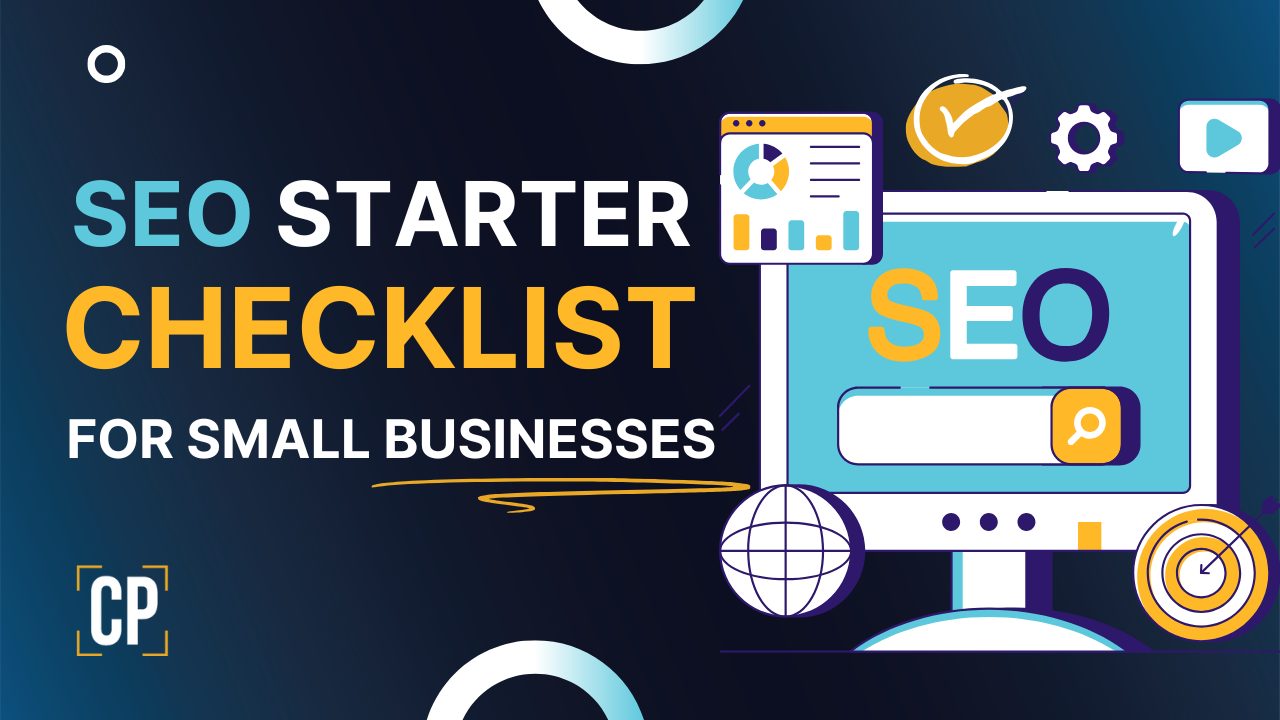This SEO starter checklist for small businesses covers the key steps every business should take.
Search Engine Optimization (SEO) helps small businesses get discovered online, build trust, and compete locally. You don’t need to master every advanced tactic to see results. By focusing on the essentials, you can increase your visibility and attract more customers without wasting time or budget.
1. Define Your Services and Keywords
Start by identifying what you want to be found for.
Action Steps:
-
List your main services (example: “residential painting in San Antonio” or “family law attorney in Dallas”).
-
Use Google Keyword Planner or Ubersuggest to research how people search for these services.
-
Include both broad keywords (roofing company) and specific ones (emergency roof repair near me).
Why it matters: Targeting the right keywords ensures you’re attracting people who are actively looking for your services.
2. Set Up SEO Tools
If your site runs on WordPress, plugins like Yoast SEO or Rank Math simplify optimization.
Action Steps:
-
Install and configure an SEO plugin for titles, meta descriptions, and sitemaps.
-
Connect your site to Google Analytics and Google Search Console to measure performance.
3. Optimize Website Structure
Your site should be easy to navigate for both people and search engines.
Action Steps:
-
Keep your menu simple (Home, Services, About, Contact).
-
Link between your service pages and blog posts to guide visitors deeper into your site.
4. Write Clear Titles and Meta Descriptions
These appear in search results and affect whether someone clicks.
Action Steps:
-
Create unique titles and descriptions for each page.
-
Use keywords naturally. Example:
-
✅ Affordable Lawn Care in Dallas | GreenPro Landscaping
-
❌ Cheap lawn | Dallas cheap yard | Dallas cheap grass
-
5. Use Proper Headings (H1, H2, H3)
Headings organize content and help search engines understand your page.
Action Steps:
-
One H1 per page (usually the title).
-
Use H2s for main sections and H3s for subpoints.
-
Add keywords where they fit naturally.
6. Create Useful Content
High-quality content builds authority and improves rankings.
Action Steps:
-
Use your main keyword in the first 100 words.
-
Write blog posts that answer customer questions and explain your services.
-
Post consistently to build momentum.
7. Optimize Images
Images play a role in SEO too.
Action Steps:
-
Rename image files with descriptive names (house-painting-service.jpg).
-
Add alt text that describes the image and includes a keyword if relevant.
-
Compress images so your site loads quickly.
8. Build Backlinks
Backlinks are links from other websites to yours and remain one of the strongest ranking factors.
Action Steps:
-
Partner with local organizations or businesses that can link back to you.
-
Publish guest articles or press releases.
-
Earn links through sponsorships or community involvement.
9. Optimize for Local SEO
Local search is where small businesses win.
Action Steps:
-
Claim and complete your Google Business Profile with accurate info, photos, and service details.
-
List your business in directories like Yelp, Yellow Pages, and industry-specific sites.
-
Use a tool like BrightLocal to manage citations and track local rankings.
Why it matters: Optimized listings help you appear in Google’s “map pack,” which drives calls and foot traffic.
10. Blog Regularly
A blog keeps your website active and builds authority.
Action Steps:
-
Post one to two blogs each month.
-
Use tools like Answer the Public or Google Trends for ideas.
-
Focus on customer-focused content such as “How to Choose a Reliable Roofing Company” instead of generic company updates.
11. Improve Mobile and Speed Performance
Mobile and site speed are direct ranking factors.
Action Steps:
-
Use a mobile-friendly theme and test across devices.
-
Speed up your site with plugins like WP Rocket.
-
Compress and lazy-load images.
12. Track Your SEO Results
SEO is ongoing. Measure progress and make adjustments.
Action Steps:
-
Use Google Search Console to see what keywords bring in traffic.
-
Monitor traffic and conversions in Google Analytics.
-
Update or expand pages that aren’t performing.
Key Takeaway
SEO for small businesses comes down to consistent effort. Set up your site correctly, publish helpful content, earn local visibility, and build authority with backlinks. Over time, these steps create a steady flow of traffic and new customers.
👉 Want expert help putting this into action? Explore our services to see how we can build and manage a tailored SEO strategy for your business.









